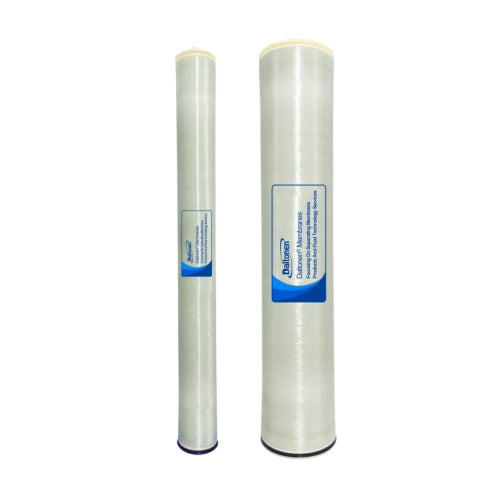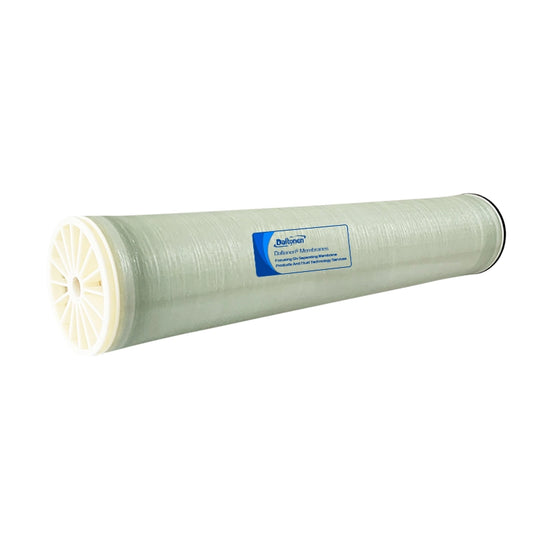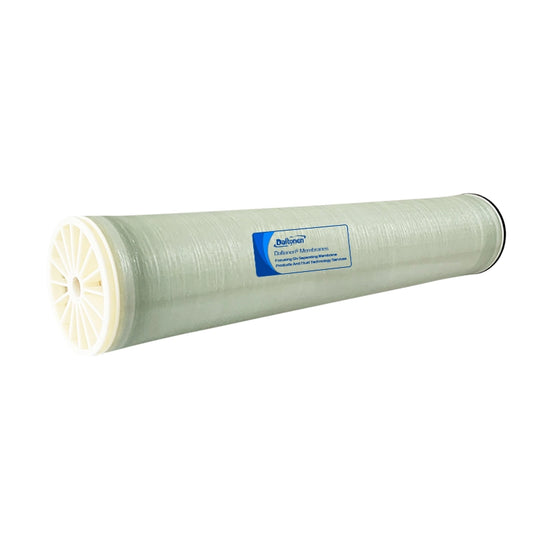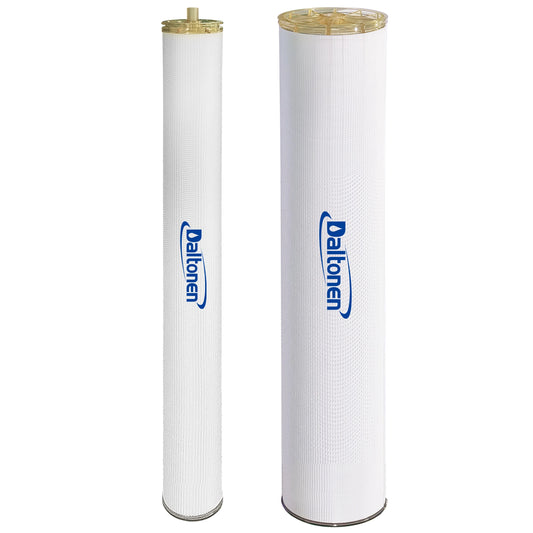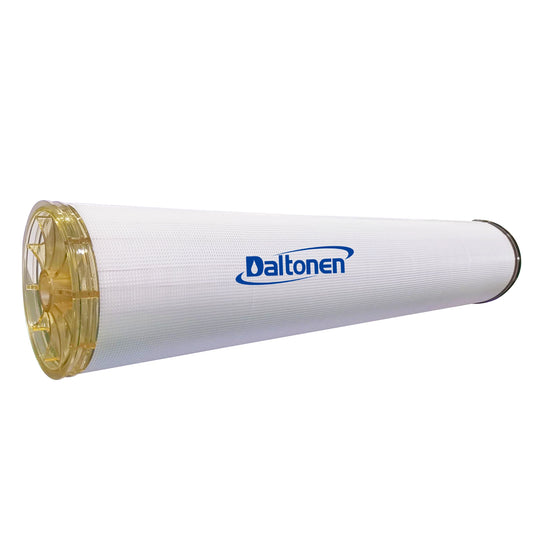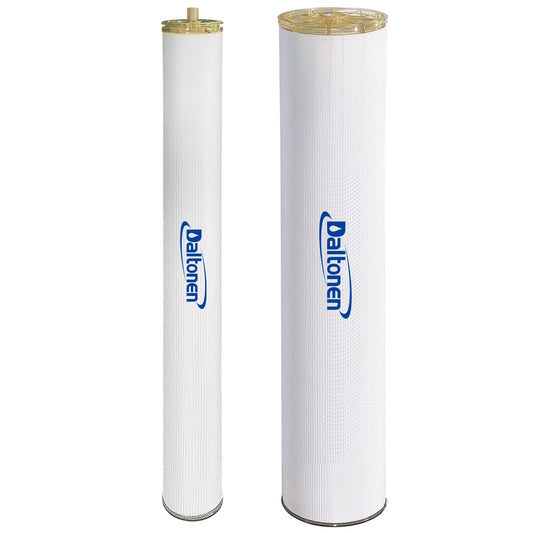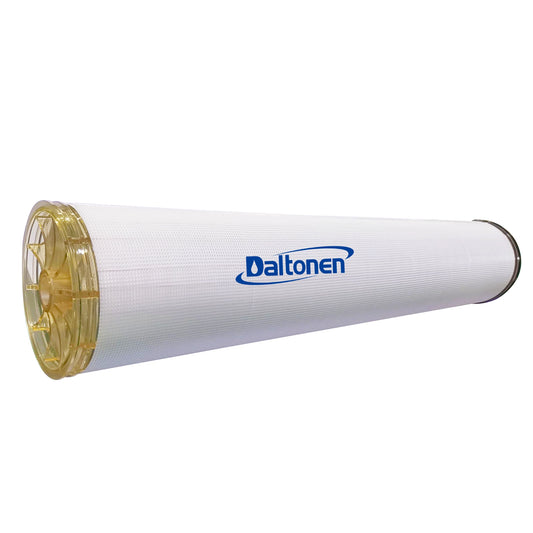Process Design Scheme for Zero Liquid Discharge (ZLD) System of Coking Wastewater Using Reverse Osmosis Membrane
Process Design Scheme for Zero Liquid Discharge (ZLD) System of Coking Wastewater Using Reverse Osmosis Membrane
1.0 Design Basis and Challenge Analysis
-
Feed Water: Secondary effluent from biologically treated coking wastewater (e.g., A/O, A²/O process).
-
Typical Characteristics:
-
High Salinity: TDS 5,000 - 15,000 mg/L
-
High Hardness: High concentrations of Ca²⁺, Mg²⁺, prone to scaling.
-
Residual Organics: COD 150 - 500 mg/L, containing refractory organic compounds (e.g., phenols, heterocyclic compounds).
-
Others: Ammonia nitrogen, fluoride, trace cyanide, etc.
-
-
-
Treatment Objective: Zero Liquid Discharge (ZLD), product water reuse as cooling tower makeup or process water, crystalline salts disposed off-site.
-
Reuse Water Standard: Complies with standards like "Design Code for Industrial Recirculating Cooling Water Treatment".
-
-
Core Challenges:
-
Extremely High Membrane Fouling Potential: Organics, hardness, and silica readily cause membrane scaling and fouling.
-
Significant Water Quality Fluctuations: Requires high shock load resistance from the system.
-
Brine Management: The final bottleneck for achieving ZLD.
-
2.0 Complete ZLD System Process Design
This scheme adopts the classic ZLD technological route of "Pretreatment & Softening + Membrane Salt Concentration + Evaporation/Crystallization". The Reverse Osmosis membrane system plays a key role in volume reduction.
The flowchart below clearly illustrates the complete process from biologically treated effluent to final ZLD achievement, highlighting the critical role and position of the RO membrane system within it.
flowchart TD
subgraph Pretreat[Pretreatment System - Ensuring Membrane Security]
A[Biologically Treated Effluent] --> B[Equalization Tank];
B --> C[Advanced Oxidation<br>e.g., Catalytic Ozonation];
C --> D[Coagulation-Sedimentation];
D --> E[Multi-Media Filtration];
E --> F[Ultrafiltration UF];
F --> G[Clearwater Neutralization Tank];
end
subgraph Softening[Advanced Softening & Hardness Removal - Core Pretreatment]
G --> H[Reaction Tank 1<br>CaOH2 for Temp. Hardness/Mg];
H --> I[Reaction Tank 2<br>Na2CO3 for Permanent Hardness];
I --> J[Flocculation Tank];
J --> K[Inclined Plate Settler];
K --> L[Effluent Tank<br>pH Adjustment];
end
subgraph ROSystem[RO Membrane Concentration System - Core of Volume Reduction]
L --> M[Primary RO Feed Pump<br>+ Antiscalant];
M --> N[Plate Heat Exchanger<br>Temp. Control];
N --> O[Cartridge Filter 5μm];
O --> P[Primary RO High-Pressure Pump];
P --> Q[Primary Brackish Water RO];
Q -- Permeate RO1 --> R[RO Permeate Tank<br>Reusable];
Q -- Concentrate --> S[Secondary RO Feed Pump];
S --> T[Secondary Brackish Water RO];
T -- Permeate RO2 --> R;
T -- Concentrate --> U[Tertiary RO Feed Pump];
U --> V[Disc Tube reverse osmosis DTRO];
V -- Permeate DTRO --> R;
V -- Concentrate --> W[Brine Tank];
end
 subgraph EVC[Evaporation/Crystallization System - ZLD Terminal Stage]
W --> X[Evaporation/Crystallization Unit<br>MVR/MED];
X --> Y[Condensate<br>Reuse];
X --> Z[Mixed Salts<br>Off-site Disposal];
end
subgraph EVC[Evaporation/Crystallization System - ZLD Terminal Stage]
W --> X[Evaporation/Crystallization Unit<br>MVR/MED];
X --> Y[Condensate<br>Reuse];
X --> Z[Mixed Salts<br>Off-site Disposal];
endStep-by-Step Process Explanation:
1. Pretreatment System (Safeguarding the Membrane System Lifeline)
-
Purpose: Remove suspended solids, colloids, residual organics, and hardness to provide highly reliable feed water for the subsequent RO membrane system.
-
Advanced Oxidation: Uses catalytic ozonation or Fenton's reagent to degrade refractory organic compounds, increasing the B/C ratio and reducing membrane fouling potential.
-
Coagulation-Sedimentation + UF: Further removes suspended solids and colloids, ensuring effluent SDI₁₅ < 3.
-
Advanced Softening (Key Step):
-
Lime-Soda Ash Softening: Adds lime (Ca(OH)₂) to remove temporary hardness and magnesium ions, then adds soda ash (Na₂CO₃) to remove permanent hardness. Precipitation thoroughly reduces Ca²⁺ and Mg²⁺ concentrations to prevent RO membrane scaling.
-
2. Staged Reverse Osmosis Membrane Concentration System (Core of Volume Reduction)
-
Purpose: Concentce the softened wastewater in multiple stages to minimize the volume entering the evaporator, significantly reducing the capital and operating costs of the evaporation/crystallization stage.
-
Primary RO: Uses standard fouling-resistant brackish water RO membranes. Operating pressure 1.5-2.5 MPa, recovery up to 70-75%. Permeate can meet reuse standards.
-
Secondary RO: Treats the concentrate from the primary RO. Uses higher salinity tolerance RO membranes. Operating pressure 2.5-3.5 MPa, system recovery up to 85%.
-
Tertiary RO (DTRO): Treats the secondary RO concentrate. Employs Disc Tube Reverse Osmosis (DTRO). DTRO features wide flow channels and high fouling resistance, capable of handling high salinity and scaling potential wastewater. Operating pressure 4.0-7.0 MPa, it can reduce the total wastewater volume to only 10-15% of the original feed volume.
3. Evaporation/Crystallization System (ZLD Terminal Stage)
-
Purpose: Completely evaporate the brine from the DTRO unit to achieve Zero Liquid Discharge.
-
Mechanical Vapor Recompression (MVR): An energy-efficient evaporation technology that compresses and reuses vapor, reducing energy consumption (~40-70 kWh per ton of water evaporated).
-
Process: Brine is evaporated in the evaporator; condensate is recovered (to the RO permeate tank). Dissolved solids (mainly mixed salts like NaCl, Na₂SO₄) concentrate until supersaturation causes crystallization.
-
Final Products: Condensate (reused) and crystalline mixed salts (disposed of as hazardous waste or explored for potential resource recovery).
3.0 Key Design Parameters and Equipment Selection
|
System Unit |
Key Design Parameters & Equipment Selection Points |
|---|---|
|
Advanced Softening |
Lime dosage based on hardness calculation, control effluent hardness ≤ 50 mg/L (as CaCO₃). |
|
Primary/Secondary RO |
Select fouling-resistant brackish water membranes, use conservative flux design (15-20 LMH), spiral-wound elements. |
|
Tertiary RO |
Select Disc Tube RO (DTRO), withstands high pressure (≥7.0 MPa), flux 10-15 LMH. |
|
High-Pressure Pumps |
Multistage centrifugal high-pressure pumps, materials of construction ≥ 2507 Duplex Stainless Steel. |
|
Evaporation/Crystallization |
MVR evaporator, materials typically 2205 Duplex Stainless Steel or Titanium for chloride corrosion resistance. |
4.0 Scheme Characteristics and Brief Economic Analysis
1. Technical Characteristics:
-
High Reliability: Robust pretreatment ensures long-term stable operation of the downstream membrane system.
-
Economical & Energy Efficient: Multi-stage RO concentration recovers over 90% of the water with lower energy consumption, drastically reducing the load on the high-energy evaporator, which is key to the plant's economics.
-
True ZLD: The combination of membrane concentration and evaporation/crystallization彻底解决了焦化废水的排放问题 (completely resolves the discharge issue of coking wastewater).
2. Brief Economics (Estimate based on 100 m³/h feed):
-
Operating Cost per m³ (excluding depreciation): 15 - 25 RMB/m³
-
Power Consumption: ~ 8-12 kWh/m³ (mainly for HP pumps and MVR)
-
Chemical Costs: ~ 3-5 RMB/m³ (Lime, antiscalant, acid, etc.)
-
Membrane Replacement: ~ 2-3 RMB/m³
-
Evaporation/Crystallization Operation & Salt Disposal: ~ 5-8 RMB/m³
-
Summary
This scheme provides a technologically mature and economically viable path for achieving ZLD for coking wastewater. The keys to its successful implementation are:
-
"Pretreatment is the Lifeline": Advanced softening and oxidation are essential to ensure water quality entering the RO membranes.
-
"Membrane Concentration is the Core of Efficiency": The efficient multi-stage RO system is the decisive factor in reducing terminal treatment costs.
-
"Evaporation/Crystallization is the Final Guarantee": Achieves the final solidification of salts.
Pilot testing is essential in actual projects to determine optimal operating parameters and chemical dosages.
